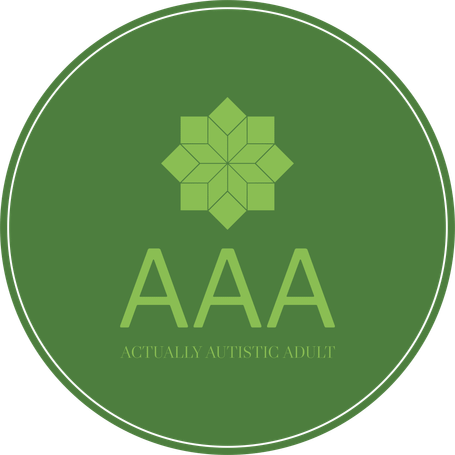Meeting the needs of autistic adults in mental health services
Written in December 2023
This is the title of some newly published guidance for people working in, and commissioning mental health services for adults, including autistic adults. I've just read it and made some notes, so while it is fresh, and my brain is buzzing with thoughts, I'm going to write this blog as a form of processing.
Overall I thought the guidance was good, clear, and ought to be required reading for anyone involved in the care, mental or physical, of autistic people (including parents, relatives and friends). It's aimed at adult care, but there are things in this document that would be helpful for young people too.
The guidance has to cover provision for the whole range of autistic people, from those who can “acceptably” mask their/any challenging behaviours, to those who don't or can't mask behaviours that are likely to be misinterpreted, rendering the individual liable to end up in long term seclusion (examples of this here; please be aware that reading this article could be distressing, it was for me). While the NHS does address the problem of long term seclusion with the HOPE(S) model, the presence of the precedent may prove hard to break.
I learned a few things from reading this, specifically the fact that I can have a Reasonable Adjustments digital flag on my health record that will, in theory, ease the burden on me to advocate personally, and regularly, for adjustments that will improve my treatment and health outcomes. Quoting here from page 10, we have the “right to access reasonably adjusted mainstream mental health and emergency services”. It's something that I plan to action next year. I'll be asking for communication preferences like email and text rather than phone calls from services, and for extra time in appointments to explain and communicate with professionals. Guidance and further information on the RA digital flag can be read here.
On page 26 the topic of cohesive transitions was discussed, and I was pleased to see that it included not just the transition between levels of care and service providers (e.g. children to adult care) but transitions like bereavement, house moves and the onset of physical health conditions. These transitions are many orders of magnitude more difficult for autistic people and it was upon reading this that I gained a new insight into the factors that lead to my most recent crisis burnout.
A better understanding of the impact of transitions on autistic people, especially in community and level 2 care, will (in my opinion) help avoid escalation to crisis point or to the stage when complex/high level care is needed. All too often the difficulties of these transitions are brushed off as “part of life” by those we ask for support, and this obviously has a detrimental impact on our mental health and our ability to self-advocate or seek support in the future.
Pages 13 to 19 covered accessibility principles, many of which are in the category of reasonable adjustments. The document explained clearly what adjustments may be made and why they need to be made. This section is well placed to be a resource for informing any workplace, of any type or provision, to support their autistic clients, service users and/or staff.
When subjects like alexithymia, masking and interoception were mentioned it was relevant and welcome to me to see these things being understood and explained to mental health professionals. The guidance discusses the fact that people who mask are more likely to experience suicidal ideation (and that both may be much much harder to spot). Additionally, the section on physical health (page 27) was insightful and relevant. I mention these together because in one of my interactions with the urgent mental health service the confluence of these factors was overlooked, dismissed when I attempted to explain, and I was then invalidated entirely by the professional I saw. I sincerely hope that if they are still working in this field, that they take on board the contents of this document and engage in some self-reflection on their past practise.
Page 17 discussed the suitability of inpatient facilities for autistic adults, and it was explained very well how an unfamiliar environment, a lack of control and autonomy and the pressure to adapt will compound mental ill health in autistic people. I am fortunate that on the occasion when inpatient care (albeit temporarily) was on the horizon for me, that I was seen by someone with knowledge of autism and sensory sensitivity, and they knew that being admitted would lead to a worsening of symptoms and a significant set back to recovery.
I was also pleased to read the sections on diagnostic overshadowing and medication prescription and I think further information and reading on these areas, specifically on the commonly misdiagnosed mental health conditions and personality disorders that autistic people are given (and therefore medicated for), is advisable.
Our brain and body chemistry is often quite different to those with typical neurological development, so some medicines will not work in the intended way. Unfortunately there is not a lot of evidence available about this, because often being autistic/neurodivergent is a precluding factor for inclusion in mental health drug trials.
I think that in conjunction with the Oliver McGowan training, plus further training for those involved in complex care planning and commissioning, that this document and the aims described, will help change the landscape of mental health care for autistic people, and not before time.
Read the guidance here: https://www.england.nhs.uk/wp-content/uploads/2023/12/B1800-meeting-the-needs-of-autistic-adults-in-mental-health-services.pdf?
We need your consent to load the translations
We use a third-party service to translate the website content that may collect data about your activity. Please review the details in the privacy policy and accept the service to view the translations.
